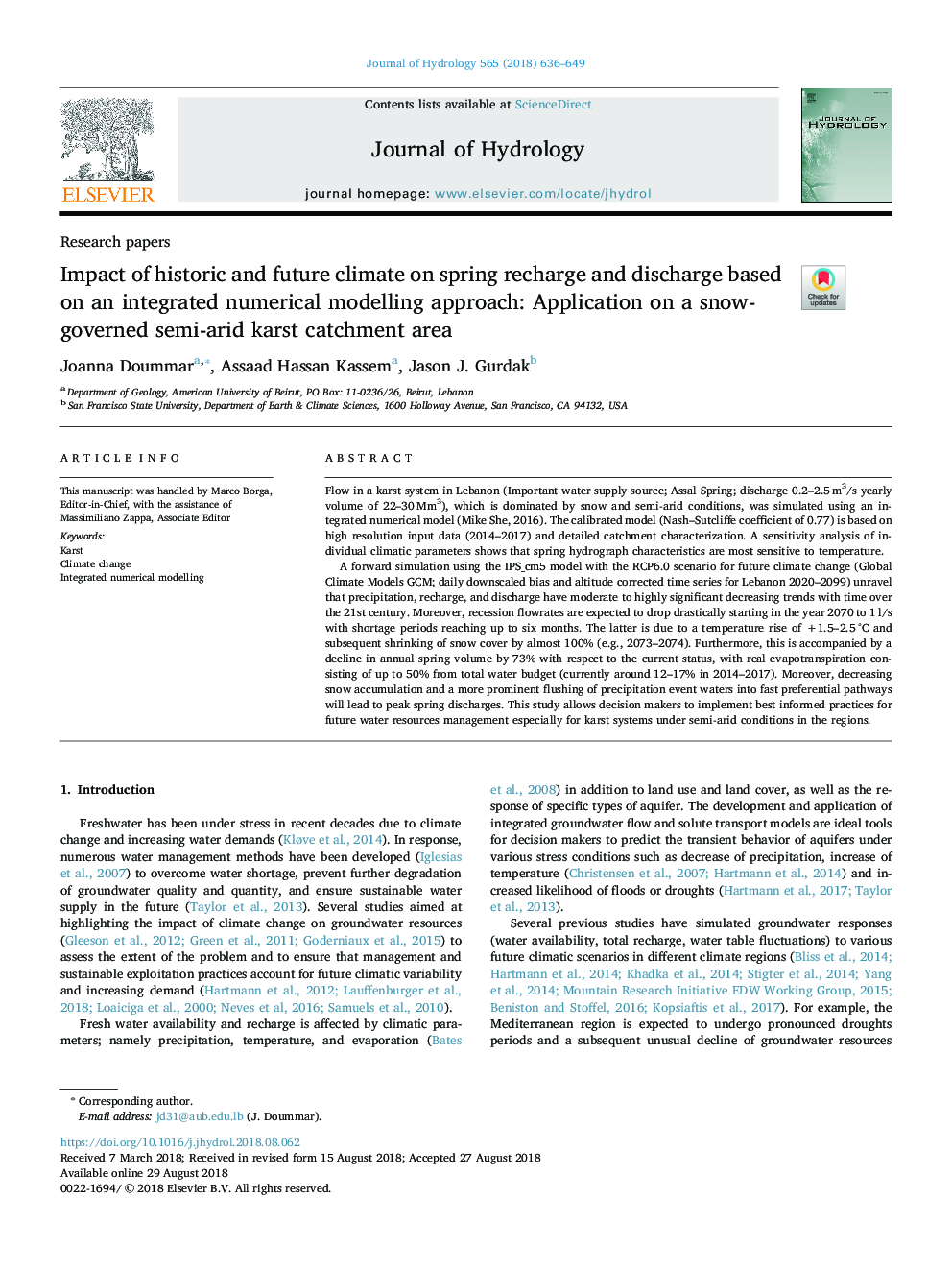| Article ID | Journal | Published Year | Pages | File Type |
|---|---|---|---|---|
| 10118250 | Journal of Hydrology | 2018 | 14 Pages |
Abstract
A forward simulation using the IPS_cm5 model with the RCP6.0 scenario for future climate change (Global Climate Models GCM; daily downscaled bias and altitude corrected time series for Lebanon 2020-2099) unravel that precipitation, recharge, and discharge have moderate to highly significant decreasing trends with time over the 21st century. Moreover, recession flowrates are expected to drop drastically starting in the year 2070 to 1â¯l/s with shortage periods reaching up to six months. The latter is due to a temperature rise of +1.5-2.5â¯Â°C and subsequent shrinking of snow cover by almost 100% (e.g., 2073-2074). Furthermore, this is accompanied by a decline in annual spring volume by 73% with respect to the current status, with real evapotranspiration consisting of up to 50% from total water budget (currently around 12-17% in 2014-2017). Moreover, decreasing snow accumulation and a more prominent flushing of precipitation event waters into fast preferential pathways will lead to peak spring discharges. This study allows decision makers to implement best informed practices for future water resources management especially for karst systems under semi-arid conditions in the regions.
Keywords
Related Topics
Physical Sciences and Engineering
Earth and Planetary Sciences
Earth-Surface Processes
Authors
Joanna Doummar, Assaad Hassan Kassem, Jason J. Gurdak,
